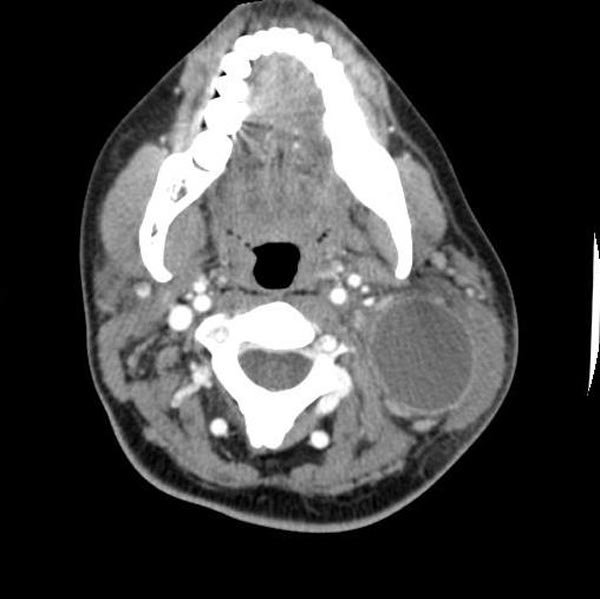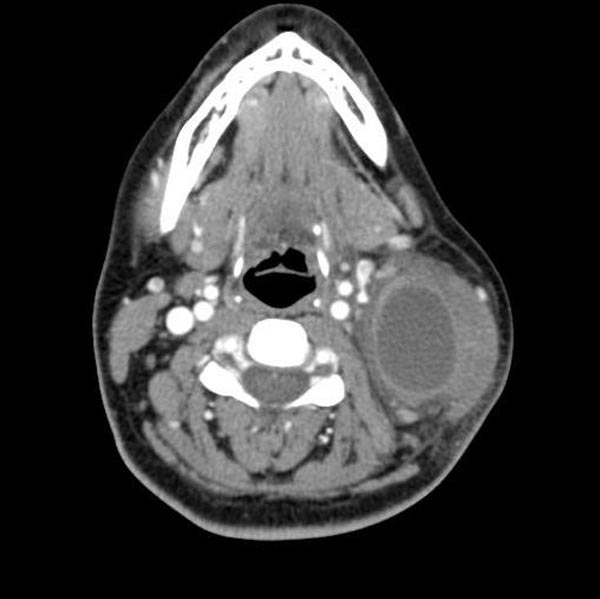Branchial cleft cyst
Jump to navigation
Jump to search
| Branchial cleft cyst | |
| DiseasesDB | 1588 |
|---|---|
| MedlinePlus | 001396 |
Editor-In-Chief: C. Michael Gibson, M.S., M.D. [1]
Overview
A branchial cleft cyst is an oval, moderately movable cystic mass that develops under the skin in the neck between the sternocleidomastoid muscle and the pharynx. It is a remnant of embryonic development and results from a failure of obliteration of the second branchial cleft. Most branchial cleft cysts are asymptomatic, but they may become infected. Treatment, when necessary, consists of surgical excision of the cyst. Recurrence is rare.
Classification
- Branchial cleft cysts are most often classified based on the cleft or pouch of origin (ie, first through fourth).
- First branchial cleft cysts are rare, are located in the parotid gland or immediate periparotid region
- Second branchial cleft cysts are common. Most often located adjacent to and may adhere to the great vessels at the mandibular angle.
- Third and fourth branchial cleft cysts are extremely rare and are found adjacent to the laryngeal ventricle, posterior to the common carotid artery and jugular vein at the margin of the sternocleidomastoid muscle.
Pathophysiology
- At the 5th week of gestation, four paired branchial clefts and pouches are present along the pharyngeal wall.
- The first cleft and pouch contribute to the formation of the external auditory canal, middle ear, and pharyngotympanic tube.
- The second through fourth pouches give rise to the palatine tonsils, parathyroid glands, and thymus, whereas the clefts subsequently involute.
- Failure of involution leads to branchial cleft cysts, fistulas, or sinus tracts.
Diagnosis
Radiologically,
- At ultrasound, features typical of a cyst are seen.
- A well-defined, fluid-attenuation lesion with slight enhancement of the capsule is seen at contrast-enhanced CT
- Infection within the cyst may cause thickening and enhancement of the wall.
- The cyst is hypointense with short-TR and hyperintense with long-TR MR imaging sequences, although some increased signal intensity may be present with short-TR sequences owing to internal particulate debris due to prior bleeding or infection.
Treatment
- The treatment of choice is complete surgical excision of the cyst and of any associated fistula or sinus tract.
References
[[reflist|2}}


